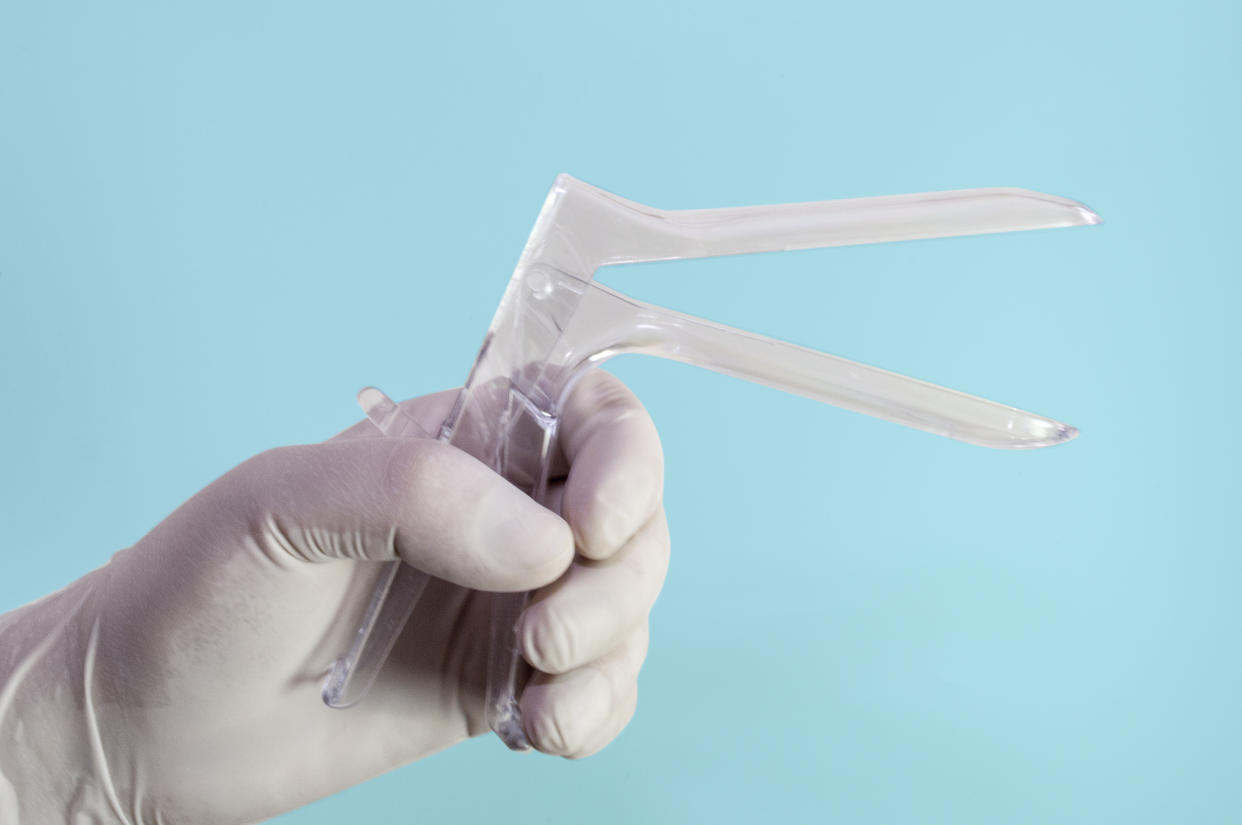Pelvic exams can be uncomfortable for patients and ineffective for doctors. This proven technique could change that.

The speculum, a duckbill-shaped medical device best known for being used during pelvic exams, hasn’t changed much over the past 170 years, but researchers are trying to make the existing tool more effective.
One of the challenges with the speculum is that it only pushes back the vagina’s front and back walls during gynecological exams and procedures. “The lateral [side] walls have nothing pushing on them,” Peggy Palsgaard, a fourth-year medical student at the Carle Illinois College of Medicine, tells Yahoo Life. “In patients with prolapse, different elasticity and just a higher abdominal mass — so pregnant patients or obese patients — the lateral wall tends to collapse inward so it can be hard to visualize the cervix. So that’s one of the limitations of the speculum.”
That can make it challenging during cervical cancer screenings, for example, when a doctor needs to see the cervix clearly to collect cells and test them for strains of HPV that can cause cervical cancer. “It’s really important for cancer screening purposes,” she says.
Not being able to easily access or see the cervix during an exam can require more maneuvering of the speculum by the physician, which is often uncomfortable for the patient. It can also lead to not getting enough of a sample and needing to redo it. It can even result in missed cancers.
So Palsgaard, along with former medical students at Carle Illinois College of Medicine, Dr. Rahul Yerrabelli, a first-year ob-gyn resident at Reading Hospital, Penn., and Dr. Ashkhan Hojati, a first-year anesthesiology resident at John H. Stroger, Jr. Hospital, Ill., set out to test the best way to improve a doctor's field of vision when using a speculum.
How to make speculums better
The researchers weren’t trying to reinvent the wheel, however. “Instead of trying to create a new design or improve designs that are already out there, we wanted to work with what people already do and what’s around the office,” says Palsgaard. “And with some data that ‘this is better than this’ and you should reach for this tool when you run into this problem” of vaginal walls collapsing.
They focused on a common practice: When a doctor has trouble visualizing a patient’s cervix, Palsgaard explains that what’s been done for many years is to repurpose a condom or medical glove and put it on the outside of the speculum so there’s a little bit of a barrier” against the vagina’s lateral walls. “It’s that little bit of pressure — because normally there’s nothing and the tissue can seep in. It can hold that back and you can see straight to the cervix.”
In their recent study, Palsgaard and her fellow researchers looked at four condom brands, as well as different brands, materials and sizes of medical gloves. They found two key things: “The condom didn't help significantly,” Palsgaard says. But nitrile gloves — which are made from synthetic rubber (not latex) and are the most common ones found in medical settings — “worked best to prevent the lateral walls from collapsing inward.” Palsgaard notes the key is to “balance that with whether or not the speculum can open easily because you don’t want it to be too restrictive. The nitrile glove” — specifically, the middle finger of the glove — “was the best.”
Why hasn’t the speculum’s design changed much in 170 years?
There's a reason the tool has been used for nearly two centuries. Dr. Alson Burke, an ob-gyn with UW Medicine, previously told Yahoo Life that the speculum does its job “pretty well.” As far as why there haven't been many strides made in terms of improving the speculum, Burke shared: “Unfortunately, with a lot of women's health and reproductive health, there isn't a lot of money toward innovation,” adding: “There are places where it could be better.”
Palsgaard agrees, saying: “The speculum design has not changed much at all.” As a medical student, Palsgaard herself has asked her mentors why this is the case. Her understanding is this: “If you think about it, inventing the speculum was the start of gynecology,” she says. “People are so trained on them it’s really hard to move away from them. And practitioners are so good at using this tool that some don't feel like they need a different tool to use and don’t want to change. It’s also so cheap, and these newer speculum designs that come out — some are commercially available and I know of one that’s marketed to patients and they're like $60, $70.” She adds: “I think there’s a lot of barriers.”
Until a better speculum is designed and widely adopted, simple fixes, such as putting a nitrile glove on an existing speculum to improve visualization, can make a difference for not only doctors but also patients. Palsgaard points out that making it easier for doctors to see during a gynecological exam can help “decrease the length of the experience,” she says.
Dr. Amy Wagoner Johnson, co-author of the study and head of the department of biomedical and translational sciences at Carle Illinois College of Medicine, tells Yahoo Life that better visualization can mean that doctors “don’t have to mess around, to take [the speculum] out and put it back — that can be difficult for the patient if they have to keep trying.”
With this study, Johnson says that “this is a nice way to draw attention to the issue and to women’s health issues in general. So this is a good thing.”
